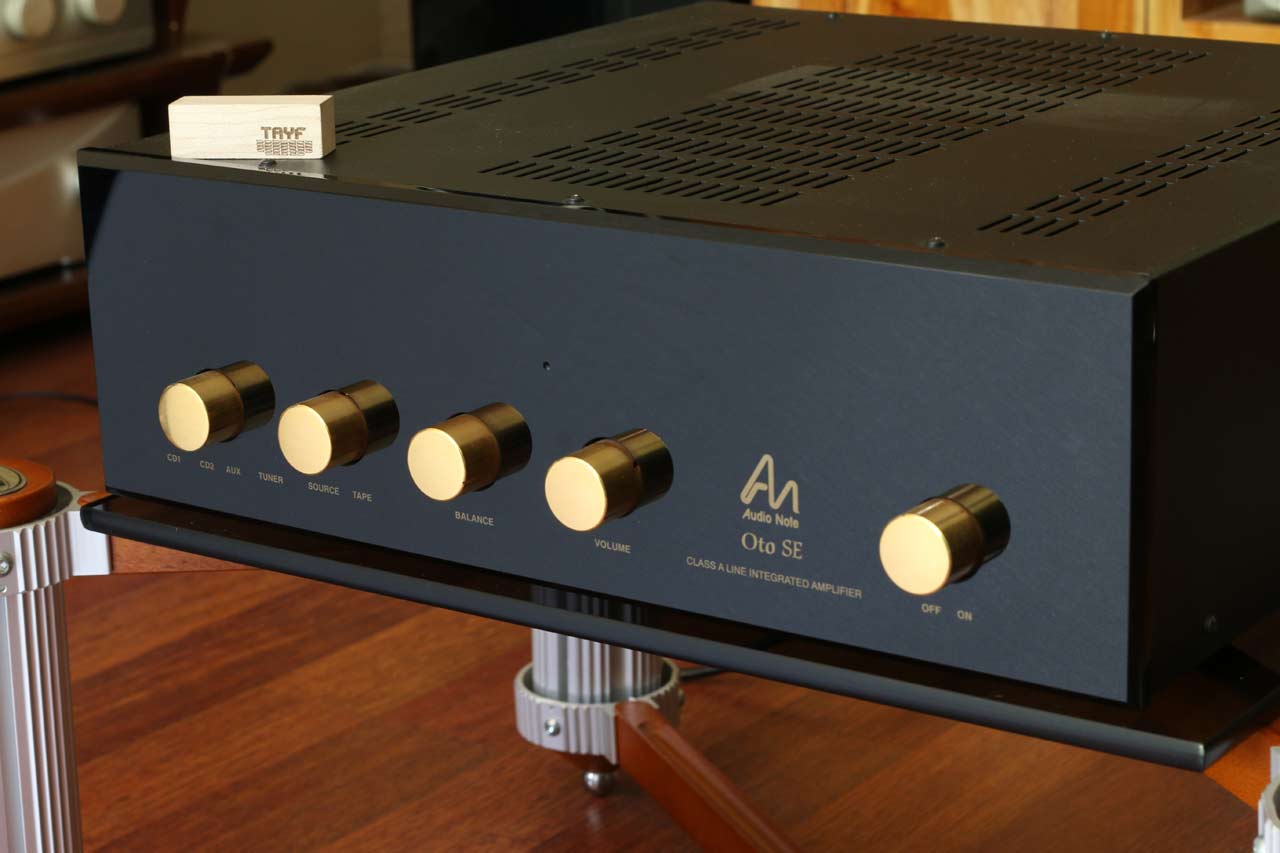
This could be attributed to the Amperex 6L6GC. For a tube amplifier, the bass is surprising stronger than my Jolida, being lean and tight as opposed to the looser bass from my 6550 driven Jolida. I used the amplifier to listen to light jazz and voclas. I would of course prepferred it if the nice glowing tubes are exposed for aesthetic as well as ventilation reasons. The looks are somewhat similar to the Oto SE. The amplifier comes with nice gold knobs on an acrylic facsia. There are one EC 83 triode, 2 6SL7 tubes and 4 6L6GC Amperex tubes. My first impression of the product was that it is handsomely made with a black casing concealing the tubes inside. This is my second tube amplifier after trying out the excellent Jolida SJ 502A which I got second hand. Review by Arsene ( A ) on Januat 20:21:27 Recommended.Model: Soro SE Category: Amplifier (Tube) Suggested Retail Price: USD 2,600 Description: Single -ended amplifier using 5881 pentodes Manufacturer URL: Audio Note Manufacturer URL: Audio Note It’s also the least suited to inefficient speakers and aggressive sources so careful system matching is a must. It has better clarity and dynamics and, at its best, was the most realistic. The Audio Note Oto SE seems to be more committed to the potential of valve technology than the alternatives in this group. This is partly a reflection of the Oto SE’s enthusiasm and is a small price to pay for the life that came with it. Ironically, it was better suited to the slightly dark balance of the Agathons. Tonally, however, I found the amp a touch lively with the Audio Note speakers. Results with CD were particularly good, the Black Crowes live offering up a wealth of previously undiscovered detail, Phono performance echoed this clarity. Other amps appear to have clarity, but it seems to be difficult to beat a well executed single ended design when it comes to dynamic resolution. What this amp does so well is reveal the shape, level and tonal colour of notes. The insight the Oto SE offers is, for me, worth more than sheer power. It has a tremendous ability to resolve subtle detail and managed to add nuances that none of the others even hinted at. The Oto SE is the least powerful and cleanest sounding amplifier in this group. The input sockets, however, are on its left hand flank which might be inconvenient.

The speaker outputs have taps for four and eight ohm-speakers which sit at the back of the amp. The Oto SE is equipped with three line inputs, the aforementioned vinyl disc stage, tape out and pre out (which allows you to add a PISE power amp for bi-amping purposes). Single ended operation means fewer watts and more expensive output transformers but gives a degree of transparency that more than compensates for these inconveniences. There is a standard Oto available, with conventional push-pull output, for £ 1,250, but the SE version has a lot more street cred. The Oto SE is unique in this group as it has both a phono stage and a single ended output stage, hence the SE. Instead, it is a creation of the British arm and at £ 1,500 is somewhat more accessible. The Oto SE, by contrast, doesn’t come from the Japanese side of the company. The Ongaku for instance, which has won admiration around the world, now costs more than 40 grand. The Audio Note brand name can be found on loudspeakers, cartridges and valve electronics with price-tags that should carry a health warning.


 0 kommentar(er)
0 kommentar(er)
